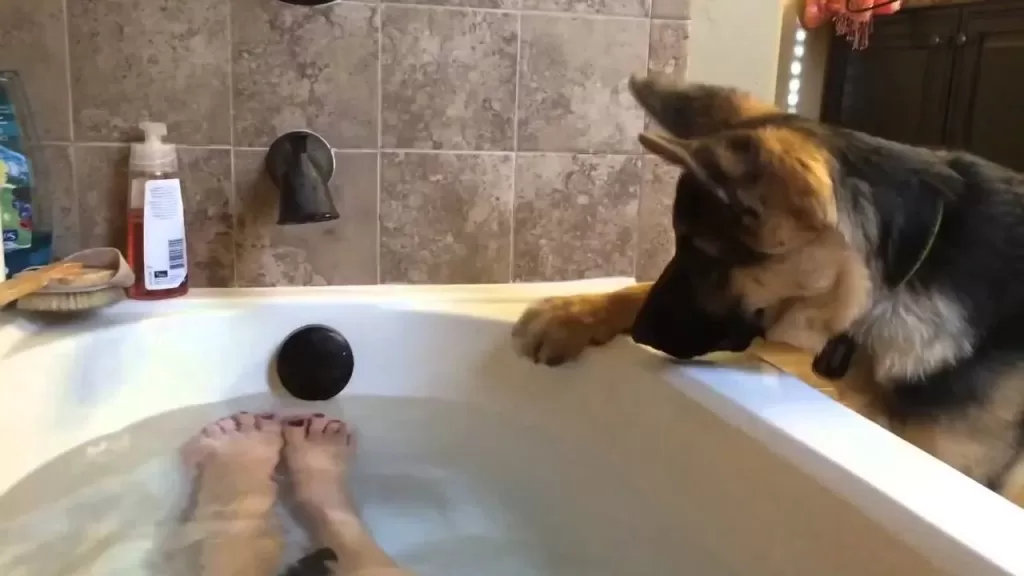Bathing your dog is not only good for their hygiene, it is also an excellent opportunity to check for unusual scratches, bumps, flies, and other abnormalities.
Table of Contents
These things are easy to see when their hair is wet and flat against the body.
Bathing is a bonding experience for you and your dog.
Things that determine your puppy’s bathing routine
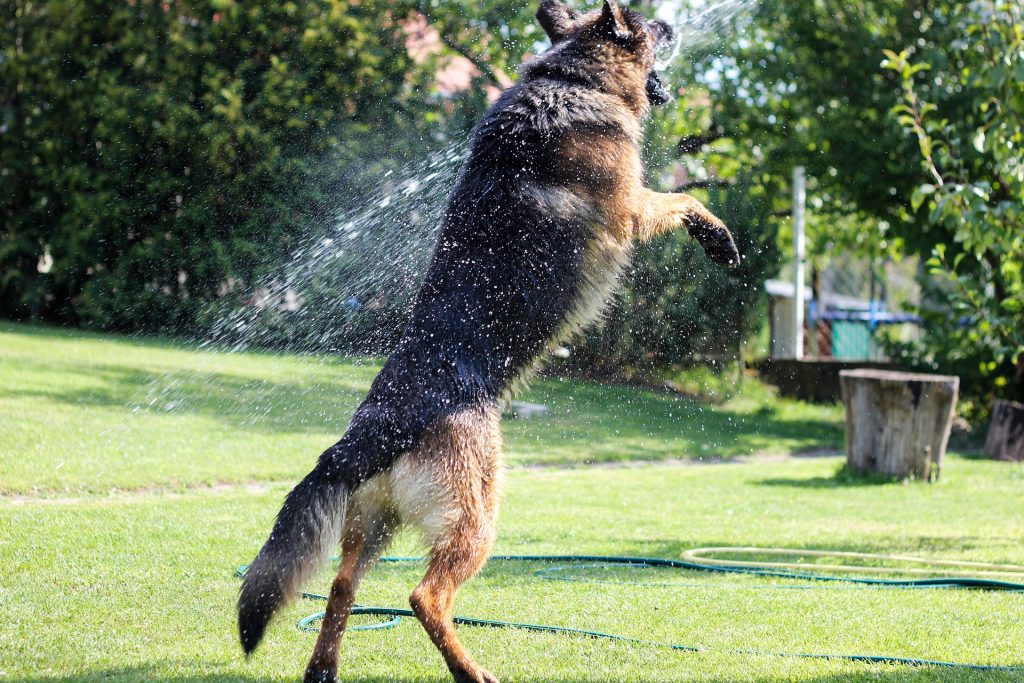
Hair length: Does your dog have long hair that can get caught in dirt and debris? Or are they less likely to be short-haired and terrible?
Activity level: A dog who is more likely to bother digging holes, playing in the park, wrapping trash, or swimming than indoors.
Also Read: Smegma Removal and Treatment: How to Clean Dog Smegma by Yourself
Allergies and skin conditions: Some dogs have skin allergies or other health conditions that require more or less frequent bathing.
Your dog needs natural oils that produce skin to promote hair growth. Plus over bathing can cause irritation and dryness. So don’t overdo it!
Veterinarian-Recommended Dog Bathing: A Step-by-Step Guide
Bathing your dog can be a fun and bonding experience. Plus, it keeps your furry friend clean and healthy. To make sure you’re doing it right, we’ve put together a step-by-step guide with advice from veterinarians.
How to Bathe a Dog the Right Way
Total Time: 60 minutes
Step 1: Gather Supplies
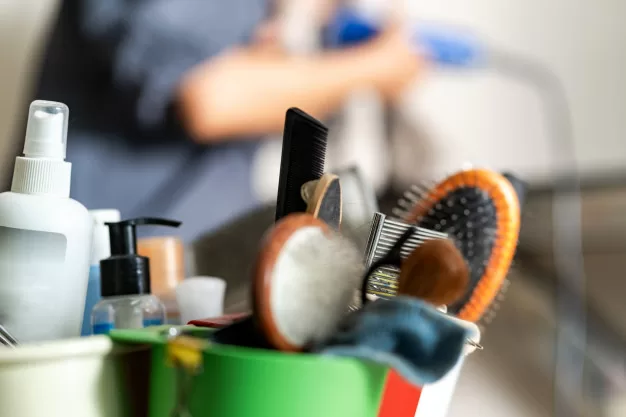
Before you start, gather everything you need:
Dog-friendly shampoo (avoid human shampoo as it can irritate their skin).
A towel.
A non-slip mat for the tub or shower.
A brush.
Treats (for good behavior!).
Prepare them by giving your puppy a thorough brushing to get rid of tangles and excess hair and it is also advised to use best brushes to prevent infections for your dog.
Step 2: Brush Your Dog
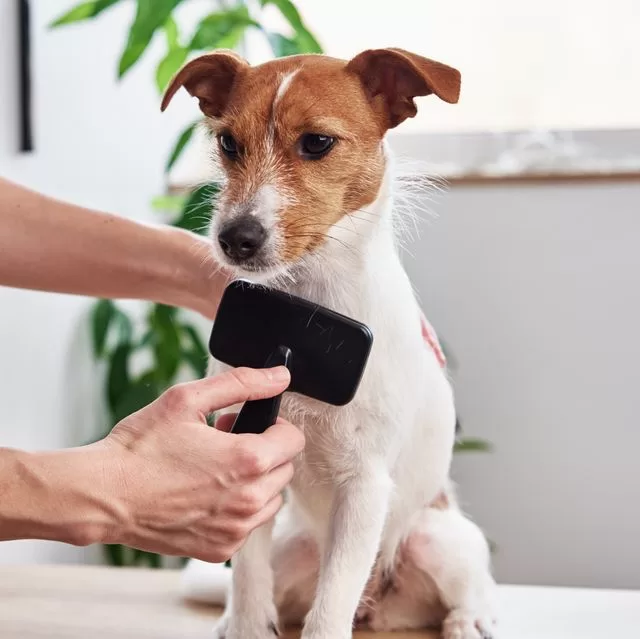
Brushing your dog’s fur before giving them a bath is a good idea. It helps get rid of tangles and any loose hair. Why is this important? Well, when your dog gets wet in the bath, the tangles can get even worse, and loose hair can clog up the drain. So, by brushing them first, you make the bath work better, and it’s more comfortable for your furry friend too!
Step 3: Prep the Bath Area and Wet the Pup
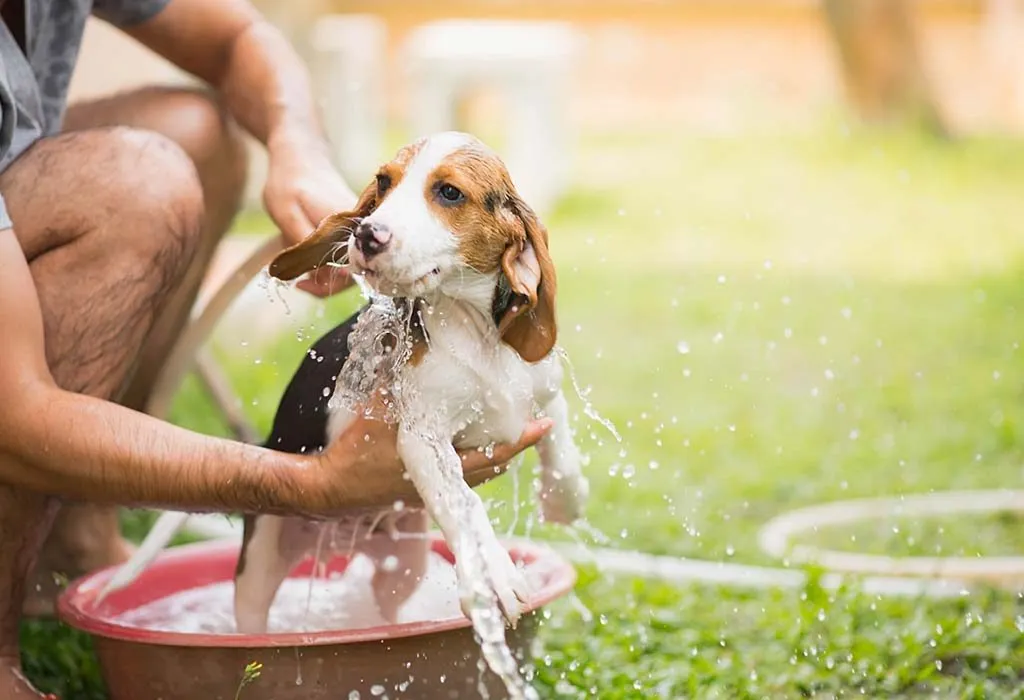
Now, let’s get your dog ready for their bath. First, place your pup on the non-slip mat inside the tub or shower. This keeps them steady and safe during the bath. Next, make sure the water is just the right temperature like you would for a baby – not too hot and not too cold. You can check it with your wrist to be sure it’s comfy for your furry friend. Keep the bathroom door closed to prevent any escape attempts!
Step 4: Apply Shampoo and Rub
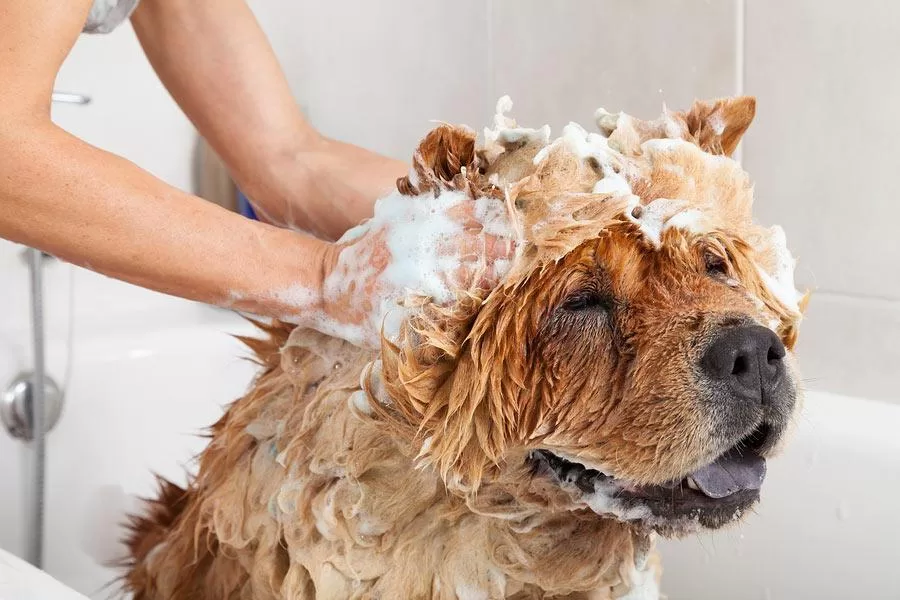
Gently lather the dog shampoo on your pup’s coat. Be extra gentle around their face. Use a tear-free shampoo for their head and Massage the shampoo into their fur. This helps remove dirt and odors. Pay attention to paws, underbelly, and tail.
Step 5: Rinse Well and Towel Dry

Rinse your dog carefully, making sure there’s no shampoo left. Leftover shampoo can irritate their skin. Rinse from head to tail. Wrap your dog in a towel and give them a good rubdown. Some dogs love this part! Others may want to shake off the water first.
Step 6: Treats and Praise
Give your pup a treat and lots of praise for being a good dog during the bath. This positive reinforcement makes them associate baths with good things.
Step 7: Brush Again

After your dog’s bath, it’s a great idea to give their coat one final brush. This step not only helps keep your pup looking dapper but also serves a crucial purpose in maintaining their fur’s health.
Brushing your dog’s coat again after a bath helps prevent matting, which can be a common issue, especially in dogs with longer or thicker fur. Mats are tangled clumps of fur that can be uncomfortable and even painful for your dog. By brushing them out, you ensure that your furry friend stays comfortable and avoids any potential discomfort.
Bathing Your Dog: How does a dog feel after bathing?
- Dogs love a good massage most dogs do not enjoy the bathing time even though they like water. They love your attention but hate the tub
- Most dogs do not like bathing, and the main reason dogs become insane afterward is that they are relieved that it is all over. Our dogs gnaw nuts after bathing because they are a quick way to release energy.
- Bathing plays an important role in the health of your dog’s coat and skin, but most dogs skip bath time. Bathing makes your dog free of germs and parasites.
Most dogs are restrained and stressed while bathing. They can tolerate it but this is not what they want to do.
After bathing your dog they will be covered with the freshest scent – they may not be happy. Dogs like to roll over in all sorts of gross things and dogs don’t smell like dogs. It is a quick way for dogs to regain their distinctive scent after bathing.
You may notice him turning on the floor as he releases your dog after bathing. This is another way for dogs to dry out.
Most dogs tolerate baths, though they do not like them. They do a very good job of trusting us and sitting the whole test, although bath time emphasizes most dogs.
You will see the release after the stressful bath is over. They often display “zooms” or “folds” after they are finally released from the tub.
Another reason dogs become insane after bathing may be trying to get rid of water in the ears.
If your dog keeps his head rolling in a towel or on the carpet after bathing indicates she is trying to get rid of the blocked water.

